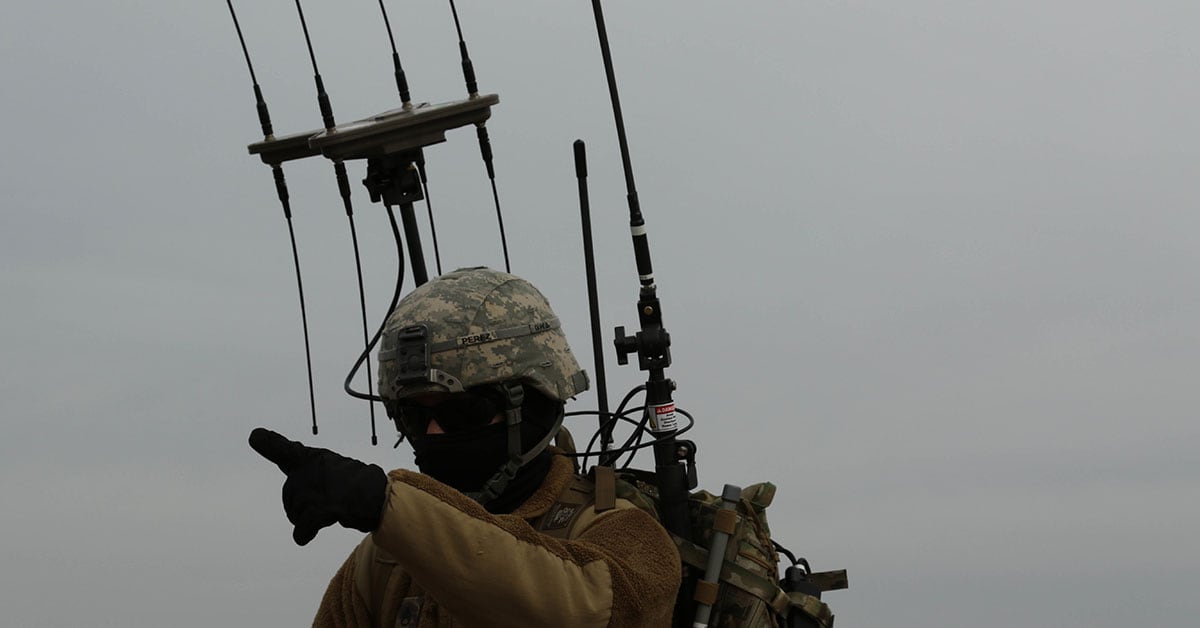In the the past year, the Army has announced the creation of new units that will focus on cyber and electronic warfare. They are among the service’s first forays into multi-domain operations, where leaders hope the military can overwhelm enemies using a host of connected and integrated weapons.
But a new report from Congress’ watchdog agency, the Government Accountability Office, found that the units are significantly understaffed and the service does not yet know how these units will be staffed, trained or equipped, which could deter them from completing a mission.
According to an Aug. 15 report, the Army believed it had to accelerate the creation of these units given the pace of threats posed by Russia and China. These Army units broadly feed into what the Army calls a multi-domain force, which encompasses capabilities across all domains of warfare to create a series of difficulties for adversaries.
“The Army did not assess the staffing, equipping, and training risk before activating one unit, and only conducted an initial risk assessment before activating a second unit,” the report read. “As a result, senior Army leaders may not know what other challenges could arise, such as sustainment, as the units grow in capability.”
The first unit referenced is the Intelligence, Information, Cyber, Electronic Warfare and Space (I2CEWS) detachment, which is part of the Army’s Multi-Domain Task Force pilot program based in the Pacific. This battalion-sized unit is described as the “brain” of the Army’s multi-domain task force and integrates all the capabilities in its name under a single formation. It is slated to be fielded by the end of 2020.
The GAO said the Army did not conduct a formal initial risk assessment of the organization because the Army created the unit as a test program.
“A risk assessment was unnecessary prior to activating the unit because the Army expects to refine the unit’s personnel, equipping, and training requirements during the pilot program,” GAO said, citing Army officials. “Unless the Army assesses the staffing, equipping, and training risks of the ICEWS unit, the unit may be unable to provide the expected capabilities, either currently or as part of the larger task force to which it will belong.”
By accelerating the activation of the detachment, the unit had just 32 percent of its personnel in place. The Army had authorized 199 positions, but only had 110 in place as of March.
The second unit is the 915th Cyber Warfare Support Battalion. This organization will create localized cyber effects through the electromagnetic spectrum.
The CWSB will operate as an Army Cyber Command asset. It will live at the division level with 12 expeditionary cyber teams, each consisting of about 45 people who will support brigade combat teams and likely operate alongside companies in the field.
The GAO noted that as of March, the new battalion was understaffed by more than 80 percent. Just 30 of 171 authorized positions for fiscal year 2019 had been filled. Army officials told the GAO it could grow the unit to as many as 627 staff by 2022.
The GAO also noted that a lack of oversight for these units could hurt how they’re equipped.
“[T]these units currently do not have what they need in terms of personnel and equipment to conduct their missions successfully. Further, according to some Army officials, without such an assessment, the Army does not know whether accelerated activation was the best course of action; what challenges they may face in staffing, equipping, and training the units; or how to mitigate challenges that may arise in other areas, such as deploying and sustainment,” the GAO said.
The Army also plans to create cyber and electromagnetic activities (CEMA) cells within the staff sections of echelons from brigade to corps. These personnel with provide commanders with ways to accomplish a mission using cyber and electronic warfare capabilities.
Additionally, the Army wants to bring online new electronic warfare companies and platoons within corps and military intelligence companies.
RELATED

The companies are scheduled to be fielded during 2023 through 2025 while the platoons are scheduled to be fielded during 2020 through 2022, the GAO said.
The report said that risk assessments conducted for the platoons and the CEMA sections found that the Army may not field enough personnel by spreading activation over three years.
Army officials have told Fifth Domain that the expeditionary cyber teams within the CWSB will serve as the planners on the staffs until the CEMA sections are fully built.
The GAO made three recommendations regarding the oversight of these new multi-domain units. They were:
- The Army should determine the risk associated with staffing, equipping and training the existing I2CEWS unit prior to its incorporation into the first Multi-Domain Task Force in fiscal year 2020.
- The Army should conduct a comprehensive risk assessment associated with staffing, equipping and training the CWSB prior to approving expansion and full operational capability.
- The Army should determine the risk associated with staffing, equipping and training of new units that it plans to activate in an accelerated manner. This means considering the assessments performed on the first activated I2CEWS and the CWSB.
Mark Pomerleau is a reporter for C4ISRNET, covering information warfare and cyberspace.








